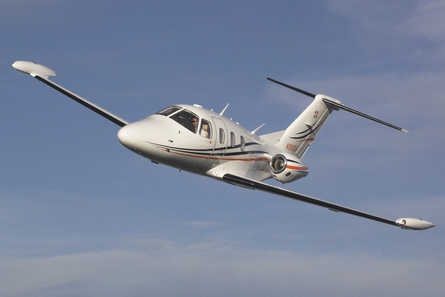Eurocontrol is working to collate enough information about very light jet performance, and about the types and expected frequency of operation, to be able to mount an air traffic management simulation of European airspace likely to be used by VLJs, says the agency's deputy director of air traffic management strategies Alex Hendriks. The intention is to examine how air navigation service providers will have to act to cope with the rapid growth in VLJ numbers.
Starting in October, the simulation will be mounted at Eurocontrol's research centre in Budapest, Hungary, says Hendriks. It will be a vital tool in determining how best to handle this new air transport phenomenon, which he says should not be under-estimated. "The growth of VLJs adds a significant extra dimension to the complexity of air traffic in Europe," he adds.
Hendriks says the different performance characteristics of VLJs compared with regular commercial aircraft, both in the departure and en-route phases of flight, are likely to have a "considerable impact" on the air transport network. The do not fly as fast as most jet airliners, and their climb rate is slower. As a result, ideas that are already being developed for testing in simulation include separate VLJ-specific departure paths from busy airports, and tactical offsets from busy routes.
 |
|---|
© Eclipse |
Europe is working hard to determine what is required to enable the air traffic management system to cope with the demands VLJs will pose, says Hendriks. He reveals that the US Federal Aviation Administration has been sufficiently impressed with Europe's ongoing research on measures to deal with the growth of VLJ traffic that it has invited Eurocontrol to Washington DC in September to share ideas on how to meet this new challenge.
About 500 VLJs are on order from customers intending to use them in Europe and nearly half of these are expected to be delivered by the end of 2010, says Eurocontrol. It estimates that 100 aircraft will enter service each year and 700 will be operating by 2015. Eurocontrol's latest research indicates that the average VLJ in Europe - mostly in the hands of air taxi operators - will operate three flights of about 1h duration each day. Eurocontrol believes that in about a year's time, the ATM system will handle a net additional 200-300 flights a day purely because of the introduction of VLJs into the marketplace.
"We'll also need to assess the technical requirements for on-board systems," says Hendriks. This will include an analysis of whether VLJs should be required to carry an airborne collision-avoidance system. European airspace regulations only mandate carriage of such systems by civil aircraft with a maximum take-off weight of over 5,700kg (12,550lb) - twice that of a typical VLJ - or with more than 19 seats.
That rule was made in an era when most aircraft below that weight band would have been turboprops or piston-powered aircraft, which would naturally occupy flight levels below flight level 290 (29,000ft/8,840m).
Source: Flight International



















